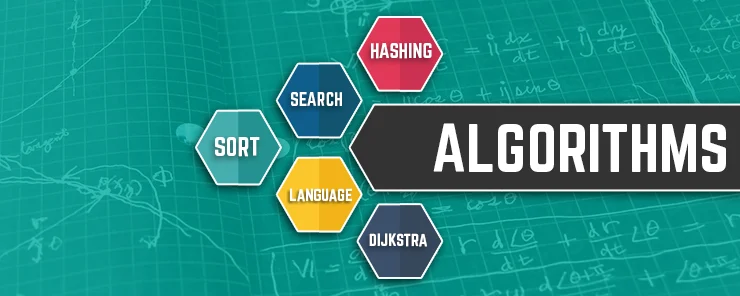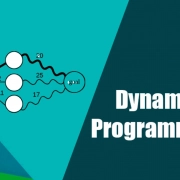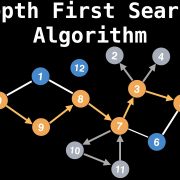Algoritma: Mantık ve Verimlilik Yolculuğu
/2 Yorumlar/içinde Algoritmalar, Bilgisayar Bilimi /tarafından Erhan KılıçModern teknolojinin karmaşık dokusunda, algoritmalar kaosu düzene dönüştüren görünmez dokumacılardır. Arama motorlarından öneri sistemlerine kadar dijital hayatımızda sıkça kullandığımız işlevselliğin ardındaki entelektüel mimarlardır. Bu yazıda, algoritmaların gizemini çözmek ve farklı türlerini keşfetmek için büyüleyici bir yolculuğa çıkacağız. Yaratıcı örneklerle, algoritmaların iç işleyişini aydınlatacağım. Kendi deneyimlerimden örneklerle, bu konuyu sizin için anlaşılır hale getireceğim. Hazırsanız, başlayalım!
Algoritmaların Özünü Anlama
Bir şefin muhteşem bir ziyafet hazırladığını hayal edin. Her yemek, son esere katkıda bulunan bir dizi adımdan oluşur. Benzer şekilde, bir algoritma, belirli bir problemi çözmek veya bir hedefe ulaşmak için özenle tasarlanmış bir talimatlar dizisidir. Türkçe’de “algoritma” terimi, İngilizce ile aynı şekilde kullanılır ve literatürde yerleşmiştir. Bir tarif şefi nasıl yönlendirirse, algoritma da bilgisayarı görevleri yerine getirmede yönlendirir.
Örnek 1: Bir Kart Destesini Sıralama
Klasik bir örnekle başlayalım: bir kart destesini sıralama. Karışık bir desteyi artan sırayla düzenlemek istediğinizi düşünün. Basit bir algoritma olan Kabarcık Sıralaması (Bubble Sort) bunu şöyle yapar:
- İlk iki kartla başlayın.
- Karşılaştırın ve yanlış sıradaysa yer değiştirin.
- Bir sonraki kart çiftine geçin ve karşılaştırmayı/yer değiştirmeyi tekrarlayın.
- Artık yer değiştirme gerekmeyene kadar devam edin.
Kabarcık Sıralaması, en büyük kartı doğru pozisyonuna “kabarcık gibi yükseltir”. Sezgisel olsa da, büyük destelerde çok verimli değildir. Bir projede, küçük bir veri setini sıralamak için Kabarcık Sıralaması kullandım, ama veri büyüdükçe daha hızlı algoritmalara geçtim.
Performans Önemlidir
Verimlilik, algoritmaların kalbidir. Bir senfoninin uyumu, her enstrümanın kusursuz çalmasına bağlıdır; bir algoritmanın performansı da yürütme süresi ve kaynak kullanımına bağlıdır. İşte burada Büyük O Notasyonu devreye girer. Türkçe’de “Büyük O Notasyonu” (Big O Notation) standart bir terimdir ve algoritmanın performansının üst sınırını tanımlar.
Basitçe, Büyük O Notasyonu, giriş büyüklüğüne bağlı olarak algoritmanın yürütme süresinin nasıl büyüdüğünü anlamamıza yardımcı olur. Algoritmaları “sabit”, “doğrusal”, “logaritmik”, “karesel” gibi kategorilere ayırır.
Örnek 2: Telefon Rehberinde Arama
Bir telefon rehberinde isim aradığınızı düşünün. Baştan sona her ismi kontrol etmek, Doğrusal Arama’dır ve en kötü durumda 1000 isim için 1000 karşılaştırma gerektirir. Ancak rehber isimlere göre sıralıysa, İkili Arama (Binary Search) kullanabilirsiniz. Bu algoritma, arama aralığını her adımda yarıya indirir. Örneğin, bir ismi ararken kalan isimlerin yarısını anında eleyebilirsiniz. İkili Arama’nın zaman karmaşıklığı O(log n)’dir; giriş iki katına çıksa bile adım sayısı sadece bir artar. Bir veritabanı projesinde, İkili Arama ile sıralı verilerde hızlı sonuçlar aldım!
Problem Çözmede Çeşitlilik
Algoritmalar dünyası tek tip bir manzara değil; farklı problem çözme yaklaşımlarından oluşan canlı bir dokudur. Birkaç algoritma türünü keşfedelim.
1. Sıralama Algoritmaları: Birleştirme Sıralaması ve Hızlı Sıralama
Sıralamaya geri dönersek, Birleştirme Sıralaması (Merge Sort) ve Hızlı Sıralama (Quick Sort) “böl ve fethet” yaklaşımı kullanır. Birleştirme Sıralaması, kart destesini küçük alt destelere böler, bunları sıralar ve birleştirir. Hızlı Sıralama ise bir “pivot” kart seçer, diğer kartları pivot etrafında düzenler ve alt desteleri rekürsif olarak sıralar.
2. Graf Algoritmaları: Dijkstra Algoritması ve Derinlik Öncelikli Arama
Bir yol gezisi planladığınızı ve iki şehir arasındaki en kısa rotayı bulmak istediğinizi düşünün. Dijkstra Algoritması, ağırlıklı bir graf üzerinde en kısa yolu bulur. Öte yandan, Derinlik Öncelikli Arama (Depth-First Search), bir labirenti keşfetmek gibidir; bir dalı sonuna kadar inceler, sonra geri döner. Bir sosyal ağ analizinde, Dijkstra ile en kısa bağlantıları buldum ve sonuçlar harikaydı!
3. Genetik Algoritmalar
Daha ilginç bir alana dalalım: Genetik Algoritmalar. Doğal seçilimden ilham alan bu algoritmalar, çözümleri nesiller boyunca evrimleştirir. Örneğin, bir köprü tasarımı için farklı tasarımları test edebilir, zayıf olanları eleyip güçlü öğeleri birleştirerek daha iyi bir taslak oluşturabilir.
4. Dinamik Programlama
Bir merdiveni tırmandığınızı ve her seferinde bir veya iki adım atabildiğinizi hayal edin. Tepeye kaç farklı şekilde ulaşabilirsiniz? Dinamik Programlama, karmaşık bir problemi küçük alt problemlere böler ve çözümleri saklayarak tekrar eden hesaplamaları önler. Merdiven örneğinde, önce birkaç basamağı çözüp tepeye doğru ilerlersiniz.
5. Makine Öğrenimi Algoritmaları: Karar Ağaçları ve Sinir Ağları
Makine öğrenimi dünyasında, Karar Ağaçları 20 soru oyununa benzer; evet-hayır soruları ile veriyi sınıflandırır. Sinir Ağları ise insan beynindeki nöronları taklit eder, görüntü tanıma veya dil çevirisi gibi görevleri öğrenir. Bir görüntü tanıma projesinde, Sinir Ağı kullanarak inanılmaz sonuçlar elde ettim!
6. Açgözlü Algoritmalar
Bir madeni para koleksiyoncusu olduğunuzu ve sınırlı bir setten en yüksek değerli paraları seçmeye çalıştığınızı düşünün. Açgözlü Algoritmalar, her adımda yerel olarak en iyi seçimi yapar ve global olarak en iyi sonucu umar. Türkçe’de “açgözlü algoritmalar” (greedy algorithms) standart bir terimdir.
Algoritmaların Toplumsal Etkisi
Algoritmalar hayatımıza daha çok entegre oldukça, etik ve önyargı soruları ortaya çıkıyor. Algoritmalar tarafsız olsa da, eğitim verilerinden önyargılar devralabilir. Örneğin, bir iş başvuru tarama algoritması, geçmişte cinsiyet önyargısı içeren verilerle eğitildiyse, kadın adayları erkeklere tercih edebilir. Bu, algoritmanın hatası değil, verideki toplumsal önyargıların yansımasıdır. Adil bir dijital dünya için, algoritma geliştirme sırasında önyargıları ele almak ve düzenli denetimler yapmak kritik.
Örnek 3: Yüz Tanıma ve Gizlilik
Güvenlik için yüz tanıma teknolojisi düşünün. Yararlı olsa da, gizlilik ve gözetim endişeleri doğurur. Yanlış kullanılırsa veya önyargılıysa, bireysel hakları ihlal edebilir. Teknolojik ilerleme ile etik arasında denge kurmak, adil bir toplum için önemlidir.
Algoritmaların Evrimi
Teknoloji ilerledikçe, algoritmalar da evrimleşiyor. Geleceğin algoritmaları, kuantum hesaplamanın gücünü veya yapay zekanın derinliklerini kullanabilir. Verimlilik arayışı, karmaşık problemleri zarif ve hızlı bir şekilde çözme isteğiyle devam ediyor.
Sonuç
Algoritmalar, dijital dünyamızın dokusunu bir araya getiren ipliklerdir. Mantığın ritmiyle dans eder, problem çözme teknikleriyle çeşitlenir ve toplumu şekillendirme potansiyeline sahiptir. Algoritmaları anlamak, zengin bir dokuyu çözmek gibidir; her iplik, hesaplamalı aydınlanmaya bir adım daha yaklaştırır. Bir sonraki dijital ödemenizde veya kişiselleştirilmiş önerilerde, modern teknolojinin senfonisini sessizce yöneten algoritmalara bir an durup teşekkür edin!
Siz algoritmalarla hangi projelerde çalıştınız? İlginç bir deneyim mi yaşadınız? Yorumlarda paylaşın, birlikte tartışalım! Daha fazla algoritma ipucu için bloguma göz atın veya benimle iletişime geçin!
Notlar
- Terimlerin Türkçe Karşılıkları:
- Algoritma: Türkçede yerleşmiş, doğru ve yaygın.
- Büyük O Notasyonu (Big O Notation), Kabarcık Sıralaması (Bubble Sort), İkili Arama (Binary Search), Birleştirme Sıralaması (Merge Sort), Hızlı Sıralama (Quick Sort), Dijkstra Algoritması, Derinlik Öncelikli Arama (Depth-First Search), Genetik Algoritmalar, Dinamik Programlama, Karar Ağaçları, Sinir Ağları, Açgözlü Algoritmalar: Algoritma literatüründe standart.








[…] Algoritma, bir problemin adım adım çözüm tarifidir. Ancak bilgisayarlar, insan gibi muhakeme yapamaz; her detayı belirtmek zorunludur. Bu kısım, bilgisayar bilimi temellerinde en çok yanlış anlaşılan yerdir. İnsanlar algoritmayı basit sanır, ama karşınızdakinin “aptal” bir makine olduğunu unuturlar. […]
[…] gelişen yapay zeka ve makine öğrenimi alanında, sinir ağları en güçlü ve çok yönlü algoritmalardan biri olarak ortaya çıkmıştır. İnsan beyninden ilham alan bu ağlar, görüntü tanıma ve […]